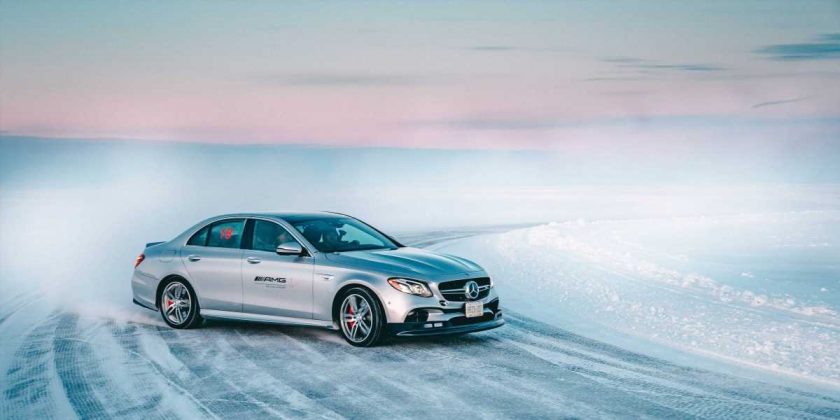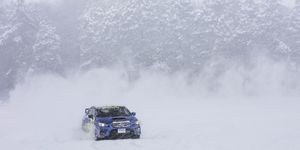Thinking the only difference between a winter, all-season, and summer-only tire is the tread pattern is like thinking the only difference between a Lamborghini and a Subaru is the way the doors open. And, much like the limited effect scissor doors have on an Aventador’s top speed, tread pattern actually plays a smaller role in the tire’s performance.
Critically, it’s the tire compound (the rubber, silicone, and plastics) and the tire construction (how the compound is mixed together with the steel weave) that really make the difference. Ultimate grip from a tire comes from how well the rubber can dig into the road surface. And just like a high-performance summer tire works best when it’s hot, winter tires work better than anything in the cold.
While the small blocks in a winter tire’s tread pattern do help chew up the snow, much more importantly, the rubber of the tire remains soft, supple, and compliant in sub-freezing temperatures. Summer tires and even all-season rubber become hard—frozen, you could say—and lose performance. That means that even in dry conditions, you have more grip to stop and turn in cold weather with winter tires.
How cold is cold enough to justify winter rubber? Tire Rack’s Tire Information and Testing Manager, TJ Campbell, puts it this way: “If you can see your breath regularly, you should probably be on winter tires. That’s a good rule of thumb.”
If you live in the snow belt, you’re generally talking between late fall through early spring. Or, as Campbell says, “For our area, just in general, we say from Thanksgiving to Tax Day.”
And, yes, even if you have all-wheel drive or an SUV—or an SUV with all-wheel-drive—this applies to you.
“All-wheel drive, just like other safety systems such as traction control or ABS, doesn’t improve traction, or create traction, it just maximizes the traction you have,” Campbell says.
In other words, your all-wheel-drive system will just spin all four wheels as it goes nowhere, instead of only two. And, more importantly, all-wheel drive does very little to help you turn and absolutely nothing to help you stop. And, really, in the winter months, what is more important? In the winter, getting moving is easy enough; it just takes patience and sometimes a heavy enough right foot. But being able to stop again is critical and requires traction. Simply put, winter tires offer more of it.
And that even applies to the all-season tires that are winter rated, which means it has the snowflake over a mountain on its sidewall. Campbell explains:
“A lot of all-terrain tires are three-peak mountain snowflake branded. In order to achieve that brand, a tire has to be physically tested and perform noticeably better than the reference tire. But that is only in one specific condition: medium-packed snow. And it only tests acceleration traction. And if it delivers 10 percent more traction than the reference tire, it meets the three-peak mountain snowflake requirement.”
In other words, that’s just one specific test that has nothing to do with stopping.
A new set of winter tires is no more expensive than a new set of regular tires. And miles you put on your winter rubber are miles not accumulated on the standard tire. That means you’re not only making your car safer in the colder months, you’re extending the life of your warmer climate shoes.
Let’s put it one final way: Buy winter tires!
Source: Read Full Article




